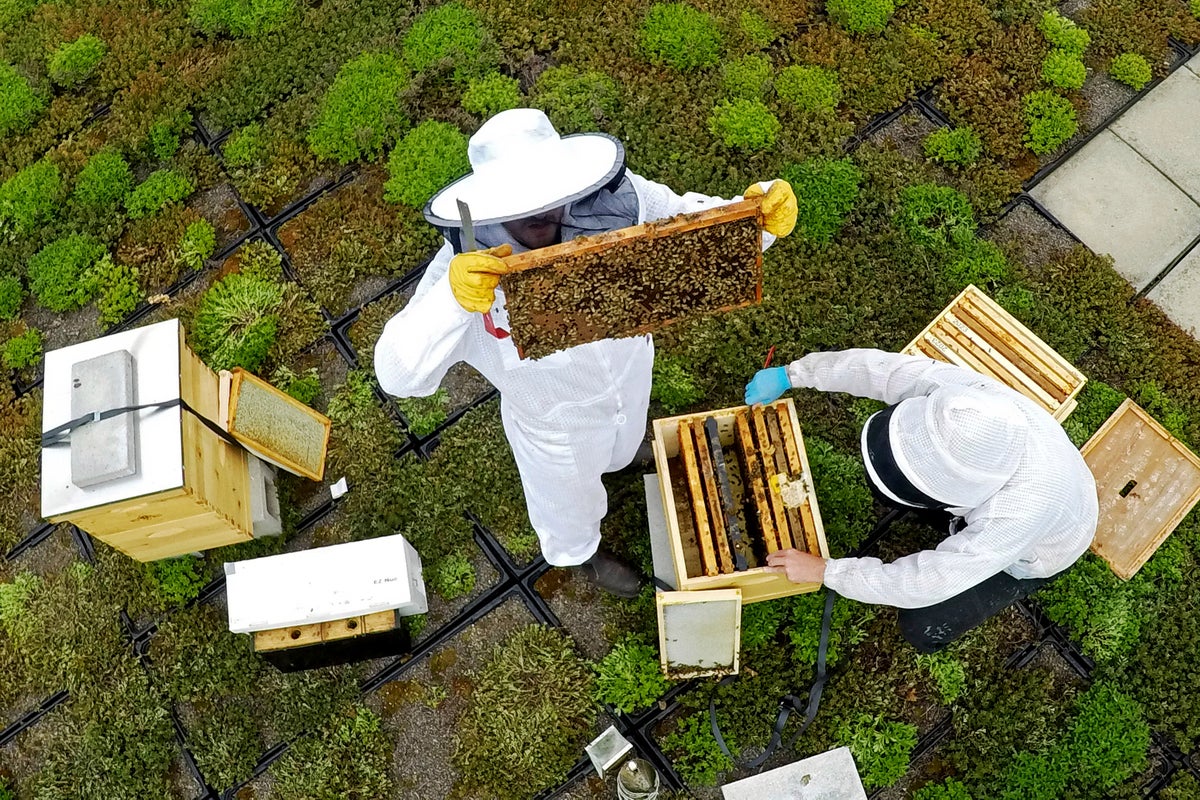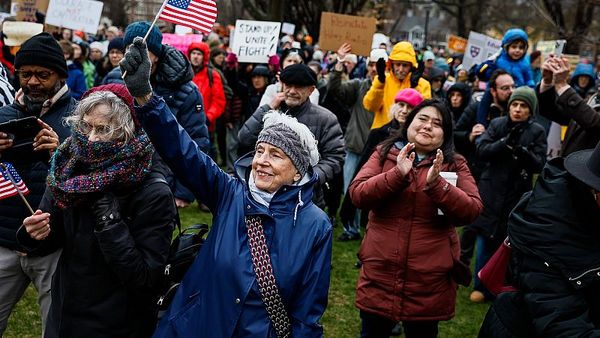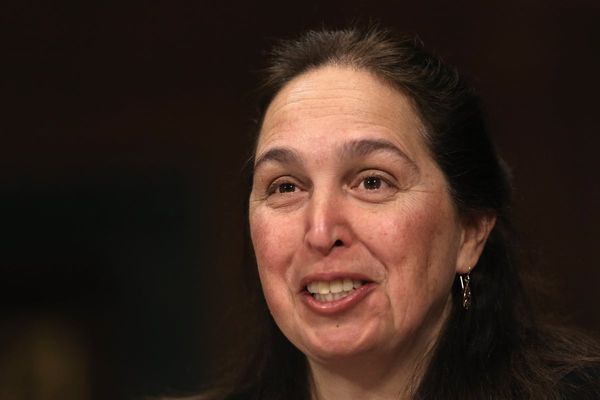
EDITORS/NEWS DIRECTORS:
The federal government is working to promote the health of honeybees and other pollinators by placing hives at several federal facilities around the country.
The General Services Administration’s Pollinator Initiative, a government program aimed at assessing and promoting the health of bees and other pollinators, started last year with hives at 11 sites. Some did not survive, while others have been added. It now operates in five states at six sites.
The GSA is contracting with Best Bees Company, which maintains the hives for the program while collecting data from these and hundreds of other hives across the country for research. The data derived from the network can help determine what’s helping the bees, what’s hurting them and why.
Here's a look at the federal sites participating in the program and tips for localizing the story.
___
READ AP’S STORY
Honeybee health blooms at federal facilities across the country
___
FEDERAL BUILDINGS WITH HONEYBEE HIVES THIS YEAR
— Colorado: Denver Federal Center in Lakewood
— Illinois: Federal Archives Records Center in Chicago
— Indiana: United States Courthouse in Hammond
— New Hampshire: Warren B. Rudman United States Courthouse in Concord
— Maryland: Centers for Medicare & Medicaid Services headquarters in Baltimore and U.S. Food and Drug Administration, White Oak Campus in Silver Spring
— Note: Six sites tapped for the program last year are no longer operating. Hives placed at the National Archives building in Waltham, Massachusetts, for instance, did not survive the winter. Other sites that have hosted hives include:
— California: National Archives in San Bruno
— New York: The Greater New York Federal Building in New York City
— North Carolina: Century City Post Office in Raleigh
— Oregon: Edith Green Wendell Wyatt Building in Portland
— Texas: Lanham Federal Buildings in Fort Worth
— To get more information on individual hive sites at federal buildings near you, reach out to the GSA’s regional media contacts.
___
PUBLISHABLE CONTEXT
Bees and other pollinators are critical to life on Earth. They pollinate the fruits and vegetables that we eat; pollinate hay and alfalfa, which feed cattle that provide meat; and they promote the health of plants that, through photosynthesis, give us clean air to breathe. About one mouthful in three in our diet directly or indirectly benefits from honeybee pollination, according to the U.S. Department of Agriculture.
Yet the busy insects that contribute an estimated $25 billion to the U.S. economy annually face several threats including disease, chemicals, and habitat loss that threaten them with extinction unless humans intervene. About half of all honeybee hives die annually.
___
USE THESE RESOURCES
— Details on the GSA’s Pollinator Protection Initiative, including a list of the 11 honeybee hive locations in 2022, the program’s pilot year.
— The Best Bees Company is contracted by the GSA to support the federal hive locations along with the help of local bee keepers. The company works with hundreds of other institutions, including colleges and businesses, where hives are maintained and hive data is gathered for research. You can view a sampling of these locations by clicking on the Industries menu on their site.
— Information on honey bees from the FDA
— It is common for states to have beekeeping associations. Google beekeeping associations for your state to find local experts and initiatives.
___
CONSIDER THESE QUESTIONS
— Honeybee hives have been at some sites for years. Others are hosting hives for the first time this year. Ask sites how long they have had the hives and why they elected to host the bees. Ask if there are unique climate, flora or other conditions in the area where the hives are located. Is it urban, suburban or rural? Do the bees have to survive harsh winters, summer heat?
— Reach out to local resources, including local beekeepers and beekeeping organizations to get perspective on the pressures pollinators are facing. Businesses, colleges and universities, and even apartment complexes also host hives as part of a national network to help monitor and assess honeybee health. Bestbees.com lists some of those businesses and colleges on its website. State college extension programs may also be able to provide experts.
— For the sites that have hosted hives for longer than a year, ask if there have been any tangible benefits and if there have changes made to building landscaping, such as a change in the amount or types of plants.
— Ask local experts and beekeepers what area plants honeybees and other pollinators particularly like? What do they recommend people plant in their gardens to attract and support pollinators?
— Beyond the Pollinator Protection Initiative, are there any local government or business efforts in your area promoting pollination or educating the public on the importance of honeybees and other pollinators?







